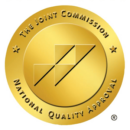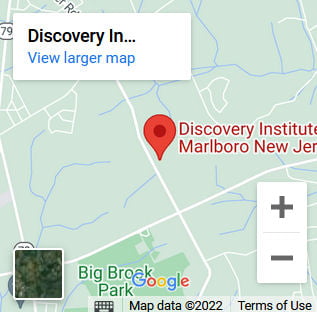Drug Classifications: Understand the Different Categories
How Are Drugs Classified?
A drug may be classified by the chemical type of the active ingredient or by the way it is used to treat a particular condition. Each drug can be classified into one or more drug classes.
There are five main categories of drugs based on their chemical ingredients and their effect on users.

1. Central Nervous System Depressants
These drugs tend to slow down the activity of the CNS. It is important to note that the term “depressant” describes the effect on the CNS, not mood.
- Examples are alcohol, barbiturates, sedatives.
- Noticeable signs of use include lethargy, lack of concentration, and excessive sleeping
- Addiction to depressants is common.
- Mixing barbiturates or tranquilizers is extremely dangerous and can be fatal.
- Withdrawal from barbiturate addiction can be challenging. It requires medical supervision.
- Nearly 50% of traffic fatalities are alcohol-related.
Addiction to CNS Depressants
Those who have become addicted to a prescription CNS depressant and stop using the drug abruptly may experience a withdrawal, which can begin as early as a few hours after the drug was last taken. Withdrawal symptoms from these drugs can be severe ad—in the case of certain medications—potentially life-threatening. Symptoms include seizures. Shakiness, anxiety, insomnia, and severe cravings.
People addicted to these medications should undergo medically supervised detoxification because the dosage they take should be tapered gradually. Counseling, either in an outpatient or inpatient program, can help people through this process.
One type of counseling, cognitive-behavioral therapy, focuses on modifying the person’s thinking, expectations, and behaviors while improving ways to cope with life’s stresses.
Often, CNS depressant misuse occurs along with the use of other drugs, such as alcohol or opioids. In those cases, the person should seek treatment that addresses polysubstance abuse.
2. Central Nervous System Stimulants
- Examples are amphetamines (diet pills, Ritalin and Methadrine), cocaine, caffeine.
- Some noticeable signs of stimulant use include abnormal cheerfulness or talkativeness, frequent urination, sleeping difficulty, and loss of appetite. Withdrawal signs may include depression, drowsiness, weakness, lack of interest, and hunger.
- Cocaine caused over 80,000 emergency room visits nationwide last year.
- “Speed” is commonly being sold in middle and high schools today. Most of these sales involve pills that look like prescription amphetamines but are caffeine tablets. These pills are not as destructive as real speed, but teens often consume large quantities to produce the desired effect. Teens may then assume they can consume the same quantity of real speed and have a serious drug reaction.
Addiction to CNS Stimulants
When misusing a prescription stimulant, people can swallow the medicine in its normal form. Alternatively, they can crush tablets or open the capsules, dissolve the powder in water, and inject the liquid into a vein. Some can also snort or smoke the powder.
Stimulants increase the activity of the brain chemicals dopamine and norepinephrine. Dopamine is involved in the reinforcement of rewarding behaviors. Norepinephrine affects blood pressure, heart rate, blood sugar, and breathing.
Misuse of prescription stimulants can lead to substance use disorder (SUD). Long term use can cause a person to develop a tolerance, which means that he or she needs higher and/or more frequent doses of the drug to get the desired effect. A SUD develops when continued use of the drug causes health, work, home or school issues. Individuals should discuss concerns with a health care provider.
Behavioral therapies, including cognitive-behavioral therapy and contingency management (motivational incentives), can be effective in helping people with prescription stimulant addiction.
3. Opiates and Opioids
- The most popular examples of opiates are heroin and morphine. Demerol, Darvon, and methadone are examples of opioids. Opiates occur naturally while opioids are man-made drugs that create similar effects.
- These substances produce euphoria and a sense of well being—in effect, blocking out pain and problems. The user may experience sleepiness, lack of focus, and loss of appetite.
- Opiate abuse and addiction are rare among children, however, the use of Darvocet and similar prescription opioids is common.
Addiction to Opiates
In the 1990s, there was a push by public health officials to improve pain treatment in the United States. This push is what led to pain becoming the “fifth vital sign”. Medical staff was given the impression that pain should be relieved. Narcotics are excellent pain relievers and too often became the “go-to” treatment for pain. Although the effort was well-intentioned, the consequences are now apparent. The overuse of prescription opioids has been a significant contributor to the current “opioid epidemic. Because doctors have needed to reduce opioid prescribing, many people have to turn to street dealers to get drugs. But prescription narcotics are expensive. So people have often switched to heroin, which is much cheaper. And dealers often lace street heroin with the even more dangerous drug fentanyl. The beginning of treatment for addiction is detoxification—a controlled and medically supervised withdrawal from the drug. Withdrawal symptoms—agitation, anxiety, tremors, hot and cold flashes, vomiting, and diarrhea—are not life-threatening but are incredibly uncomfortable. Evidence shows that methadone, buprenorphine, and naltrexone all reduce opioid use and opioid use disorder-related symptoms. They may reduce the risk of infectious disease transmission as well as criminal behavior associated with drug use. These medications also increase the likelihood that a person will remain in treatment, which itself is associated with a lower risk of overdose mortality, reduced risk of contracting an STD, reduced criminal justice involvement, and a higher likelihood of employment. The ultimate aim is to wean off the maintenance medication, but the treatment provider should make this decision jointly with the patient, and tapering the medicine must be done gradually. It may take months or years in some cases. Counseling is a mainstay of drug abuse treatment for many people. Cognitive-behavioral therapy, family counseling, and other types of therapy can help a patient stay sober. Psychotherapy can also treat the other mental health conditions that often play a part in prescription drug abuse.
4. Hallucinogens
- Examples are LSD (lysergic acid diethylamide), mescaline, peyote, and methamphetamine.
- These substances produce changes in perception, visual illusions, and alteration of the senses.
- A person under the influence of a hallucinogen may have difficulty concentrating, flights of disconnected ideas, and wide mood swings.
- MDMA (methylenedioxymethamphetamine) is a designer drug that young people think of as a harmless sexual stimulant. Other common names are “ecstasy,” “X-T-C,” “essence,” and “clarity.” In smokeable form, it is called “ice.” It is much more likely to produce drug-induced psychosis than crack cocaine and much more likely to produce destructive and violent outbursts.
- Much of what currently passes for LSD, mescaline, and other hallucinogens are PCP (a.k.a “angel dust”), a large animal tranquilizer. This is also an extremely dangerous drug that can cause violent reactions, long-term psychological effects, and even brain damage.
- When mescaline is in pill form, it is usually PCP and therefore very dangerous.
Addiction to Hallucinogens
Hallucinogens are a group of drugs that alter a person’s awareness of their surroundings as well as their thoughts and feelings. They are commonly split into two categories: classic hallucinogens (such as LSD) and dissociative drugs (such as PCP).
Both types can cause hallucinations or sensations and images that seem real though they aren’t. Dissociative drugs can cause users to feel out of control or disconnected from their bodies and environment.
Research suggests that classic hallucinogens work at least partially by temporarily disrupting communication between brain chemical systems throughout the brain and spinal cord. Some hallucinogens interfere with the action of the brain chemical serotonin, which regulates mood, sensory perception, sleep, and hunger.
Dissociative hallucinogenic drugs interfere with the brain’s chemical glutamate which regulates pain perception, responses to the environment, emotion, and learning and memory.
Although hallucinogens are not considered addictive because it doesn’t cause uncontrollable drug-seeking behavior, it does produce tolerance. Some users who take the drug repeatedly must take higher doses to achieve the same effect. This is extremely risky, given the unpredictability of the drugs.
There are no approved medications to treat addiction to hallucinogens. Behavioral treatments can be helpful for patients with a variety of addictions. But more research is necessary to find out if behavioral therapies are effective for addiction to hallucinogens.
5. Marijuana
This section includes psycho-active drugs that don’t fit into the other classifications but are psycho-active.
- The use of marijuana causes similar signs and symptoms as hallucinogens but to a lesser degree.
- Bloodshot, or red eyes are a sign of recent marijuana use. The possession of products such as Clear Eyes to cover eye irritation may be an indication of frequent use.
- Other signs of marijuana use are carrying rolling papers, having a small decorative pipe, frequently using Febreeze or other air cleaners, having a sudden craving for junk food, and having paper clips with burn marks.
- Many people consider marijuana to be the classic “gateway” drug. Continued use will often result in addicts moving on to other drugs.
- Volatile substances (glue, gasoline, paint).
Addiction to Marijuana
Marijuana use disorders appear to be very similar to other substance use disorders, although the long-term clinical outcomes may be less severe. On average, adults seeking treatment for marijuana use disorders have used marijuana nearly every day for more than 10 years and have attempted to quit more than six times.
People with marijuana use disorders, especially adolescents, often also suffer from other psychiatric disorders (dual diagnosis). They may also use or develop addictions to other substances, such as cocaine or alcohol.
Studies indicate that effectively treating the mental health disorder with standard treatments involving medications and behavioral therapies may help reduce marijuana use, particularly among those involved with heavy use and those with more chronic mental disorders.
Cognitive-behavioral therapy, contingency management, and motivational enhancement therapy have shown promise in treating those individuals.
There are currently no medications for the treatment of marijuana use disorder, but research is active and ongoing.
CONTACT US
Find out how we can help
Our compassionate counselors are standing by to answer any questions you may have. After helping thousands of people over the last 50 years, we have the resources to help you and your family and all your individual needs.
What Classes of Prescription Drugs Do People Most Commonly Misuse?
Opioids
Opioids are medications that reduce the intensity of pain-signal perception. They have been used for centuries to treat pain cough and diarrhea. The most common modern use of opioids is to treat acute pain. However, since the 1990s, they have been increasingly used to treat chronic pain despite little evidence for their effectiveness when used long term.
In addition to relieving pain, opioids also activate reward regions in the brain, causing the euphoria that underlies the potential for misuse and substance use disorder.
Central Nervous System Depressants
CNS depressants include tranquilizers, sedatives, and hypnotics, which are substances that can slow brain activity. This makes them useful for treating anxiety and sleep disorders. Although the different classes of CNS depressants work in unique ways, it is through their ability to inhibit brain activity that they produce a drowsy or calming effect that is medically beneficial.
During the first few days of taking a depressant, a person usually feels sleepy and uncoordinated, but as the body becomes accustomed to the effects of the drug and tolerance develops, these side effects begin to disappear. If one uses these drugs long term, he or she may need larger doses to achieve the medicinal effects.
Stimulants
Stimulants increase alertness, attention, and energy. They also elevate blood pressure, heart rate, and respiration. Historically, people used stimulants to treat asthma and other respiratory problems, obesity, neurological disorders, and a variety of other ailments.
As the potential for abuse and addiction became more prominent, the amount of conditions treated with stimulants has gone down. Now, stimulants are prescribed for the treatment of only a few health conditions, including attention-deficit hyperactivity disorder (ADHD) narcolepsy, and occasionally treatment-resistant depression.
Non-medical use of stimulants can induce a feeling of euphoria, and these medications increase blood pressure, heart rate, and constrict blood vessels. Also, taking high doses of a stimulant may result in dangerously high body temperature land an irregular heartbeat either the potential for cardiovascular failure or seizures.
The increase in stimulant prescriptions over the last 20 years has led to their greater availability and increased risk for nonmedical use. Because many perceive them to be generally safe and effective, prescription stimulants such as Adderall are being misused more frequently.
Where Do You Fit In?
No matter your drug of choice, you can see that there are hazards and life-threatening dangers. Don’t wait to hit bottom. Research shows that the earlier individuals seek treatment, the better their chance at success and not relapsing.
If you or a loved one needs help, there is help waiting. Make the first step by calling us at (844) 443-1101. We at Discovery Institute have been helping families recover from addiction for over 40 years. We have provided personalized, compassionate, and effective treatment for over 7,000 individuals. Contact us now!
Dr. Joseph Ranieri D.O. earned his BS in Pharmacy at Temple University School of Pharmacy in 1981 and His Doctorate Degree in Osteopathic Medicine at the Philadelphia College of Osteopathic Medicine in 1991. He is Board Certified by the American Board of Family Medicine and a Diplomate of the American Board of Preventive Medicine Addiction Certification. Dr. Ranieri has lectured extensively to physicians, nurses, counselors and laypeople about the Disease of Addiction throughout New Jersey and Pennsylvania since 2012.



